Explains modern body dissatisfaction ? which is easily fixed.
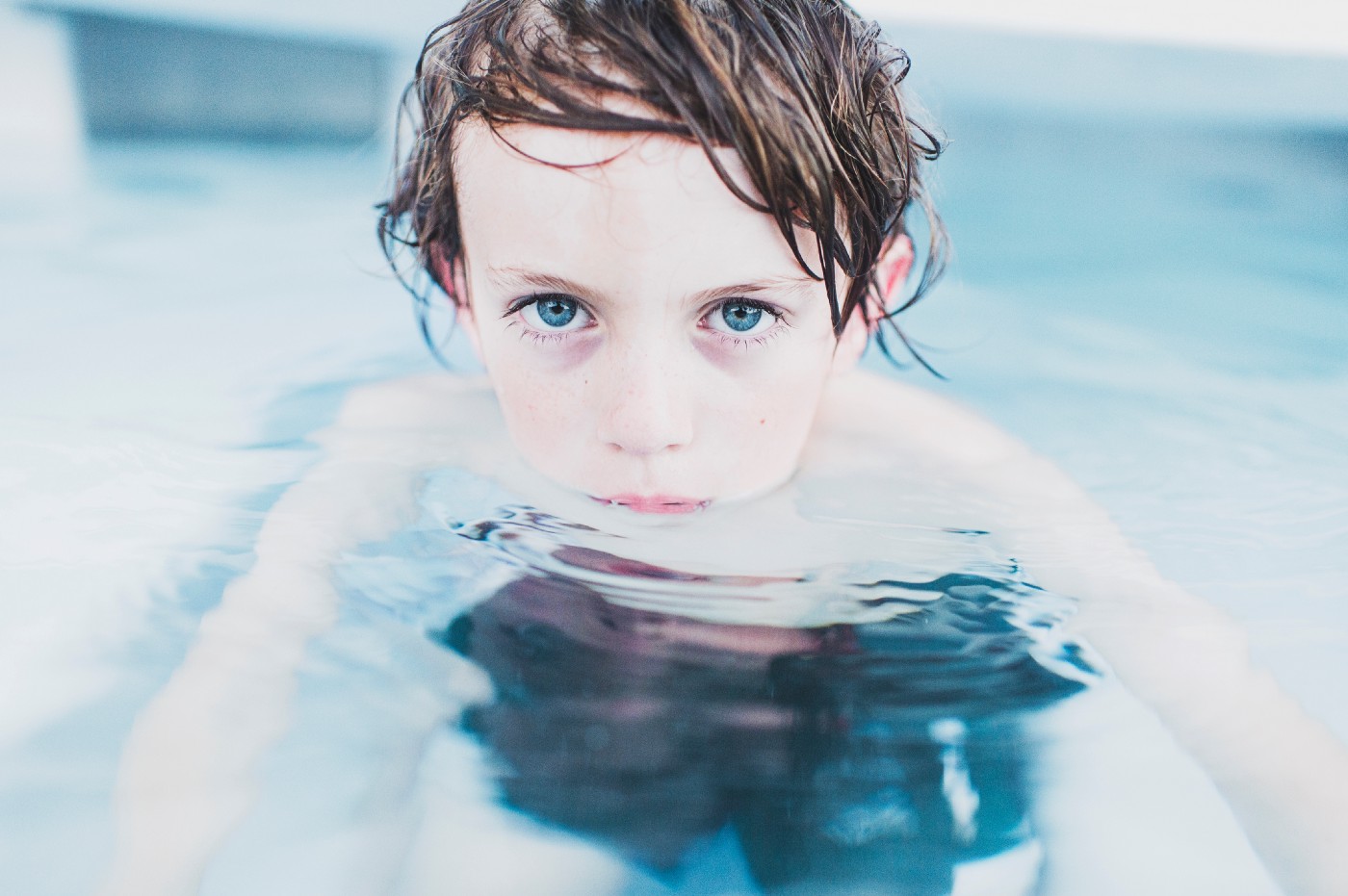
In the United States, people have one of the worst reflections of self-image almost anywhere else. 80 percent of women, 34 percent of men have a low opinion of their bodies. That?s an incredibly high cost of dissatisfaction that we all have to live with ? especially since it isn?t even normal.
This is surprisingly only a new phenomenon. If you look back at just a couple of generations before, you would see a drastically different view on body satisfaction. That might be, that just as recently as the 1970s, people ? young people in high school regularly were not only showering in communal spaces but also regularly holding swim class completely naked.
We often think of the generations before us being more conservative or modest, but they were anything but. It?s in this forgotten chapter of American history has that it reveals the cheapest way to find lasting body acceptance.
Before the 20th century, bathing in rivers was a common form of recreational sport. That all changed when the Young Men?s Christian Association, or YMCA, began to broadly expand indoor swimming across the United States.
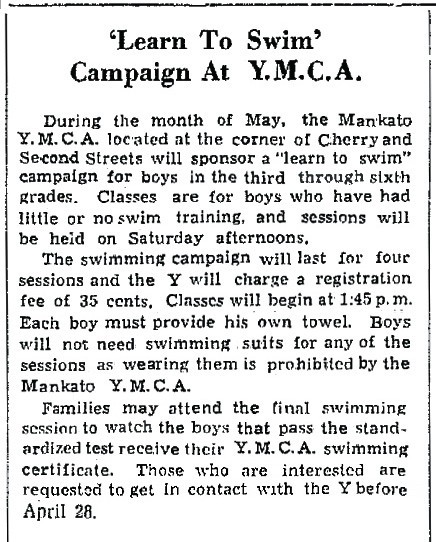
Accessibility came more quickly then practicality. Early indoor swimming pools lacked of chlorination technology. It led to algae and dirt collect in stagnant water. After quickly building up, it would cause slimy bacteria that would lead to outbreaks of cholera. This would cause the forced the closure of the pool for public safety. At least until it was completely drained and dried.
Swimsuits of the era were also part of the problem. Their fabrics were mainly comprised of largely made of wool, and fibers would clog up the filtration methods they had. But further wool is a fabric that holds in moisture once it gets really wet, and then can build up bacteria.
So the swimsuits were only making the public hygiene situation worse, and besides that ? they weren’t even that comfortable. To top it off, average people and families just couldn?t even afford the extra cost. More and more, they were becoming a luxury in the best of light, but at the very least, not very necessary. Swimming naked just became the logically default form and fashion of the day.
On the rare occasion that it was expected to wear swim gear was when ladies were present. Apparently, intending to protect the moral sensibilities.
While women would swim separately, it was so because they were expected to maintain modesty. In total contrast to men, they were socially expected to be self-conscious.
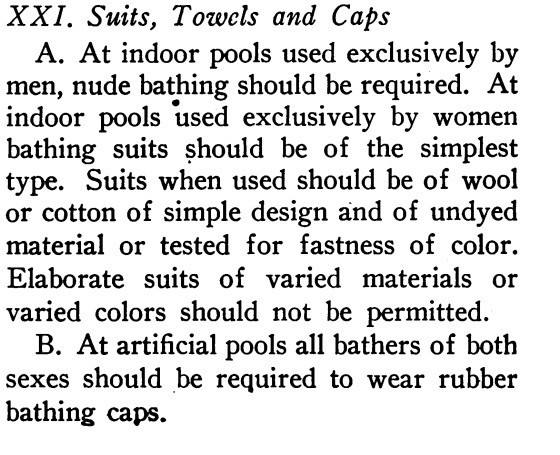
In the 1950s, things started to change. It was after WW2, and fashion designers were experimenting with nylon fabrics that had been used to make paratroopers parachutes. This strong, light and mostly quick-drying fabric was a logical choice for swimwear. This is where things started to change.
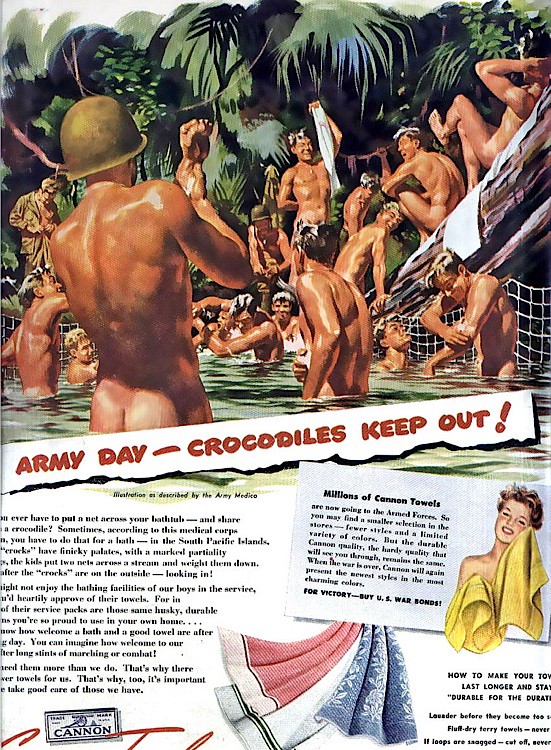
Before the 1960s, swimming nude among men was considered a fraternal activity. In contrast to as it is today, it was actually considered to be very unmanly to be ashamed. Real men would swim naked.
That all started to change as swimsuits started to become the norm. It started to cause men and women to swim together more often then they did in the past. But in subsequent conversations during the 60s, boys who took high school swim during reported it becoming frequently common for girls to sneaking in to view the boys swimming nude. This was more likely reciprocated as vice-versa, but this nevertheless had an effect that made younger generations yet to start swimming to look at the activity with more anxiety.
Parents started to voice outcry that the practice was harming boys, and protested the practice. Most of these efforts were rejected in the beginning, since the view was that nudity promoted healthy ideas about body image. Some of the rejections also added the monetary factor, as this article from 1961 points out.
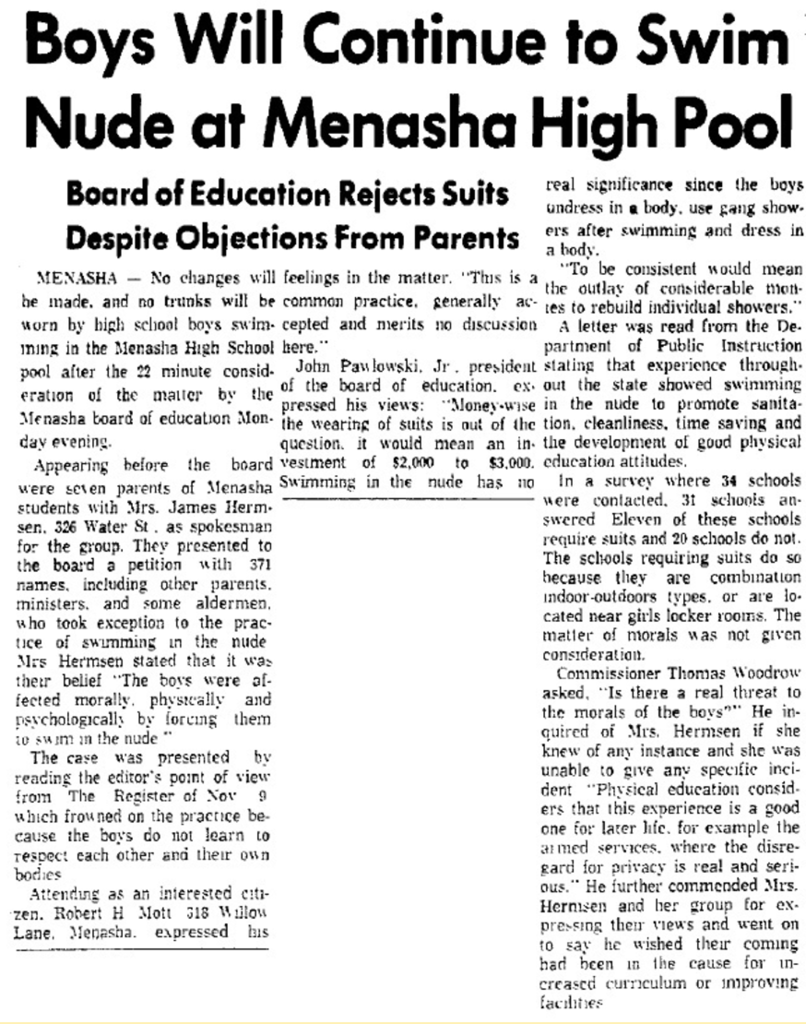
School districts continued to resist changing this policy, but with some others making concessions during the 1970s. However, all school was eventually forced to comply when federal Title IX rules required classes to become co-ed.
Nude swimming was over.
It?s ironic that one of the most prominent psychologists of the final nudist generation could explain it all best. In Albert Bandura?s Social Cognitive Theory, he explains that when it came to the question of nudity, the public perception shifted towards a modest mindset relatively quickly.
Having this happen across the entire culture had the effect of shifting another perception: the belief that one’s own body is exceptionally unique. People essentially stopped seeing each other naked. All those imperfections that people see when they look in the mirror became amplified because nobody had anything they could compare it to.
Essentially, people started to make their bar for comparison from places like seeing fashion models or porn. Both of these are obviously terrible ways to recognize what normal.
One way that communications specialists propose that this perception is corrected, is through weakening peer influence. This is done in one way: let information flow freely. Be that through discussion (i.e. talking openly about one’s own imperfections).
However, this just doesn?t have the same impact as experience. An alternative ? and much more simple way ? is simply to be naked in a group. Research is also showing that nude activities improve body image, self-esteem, and life-satisfaction in an instant and profound way. They remained that way even after a one-month follow-up.
This, of course, leads one to ask that if body satisfaction is simply correlated with being embracing nudity, then why aren’t we just doing that?